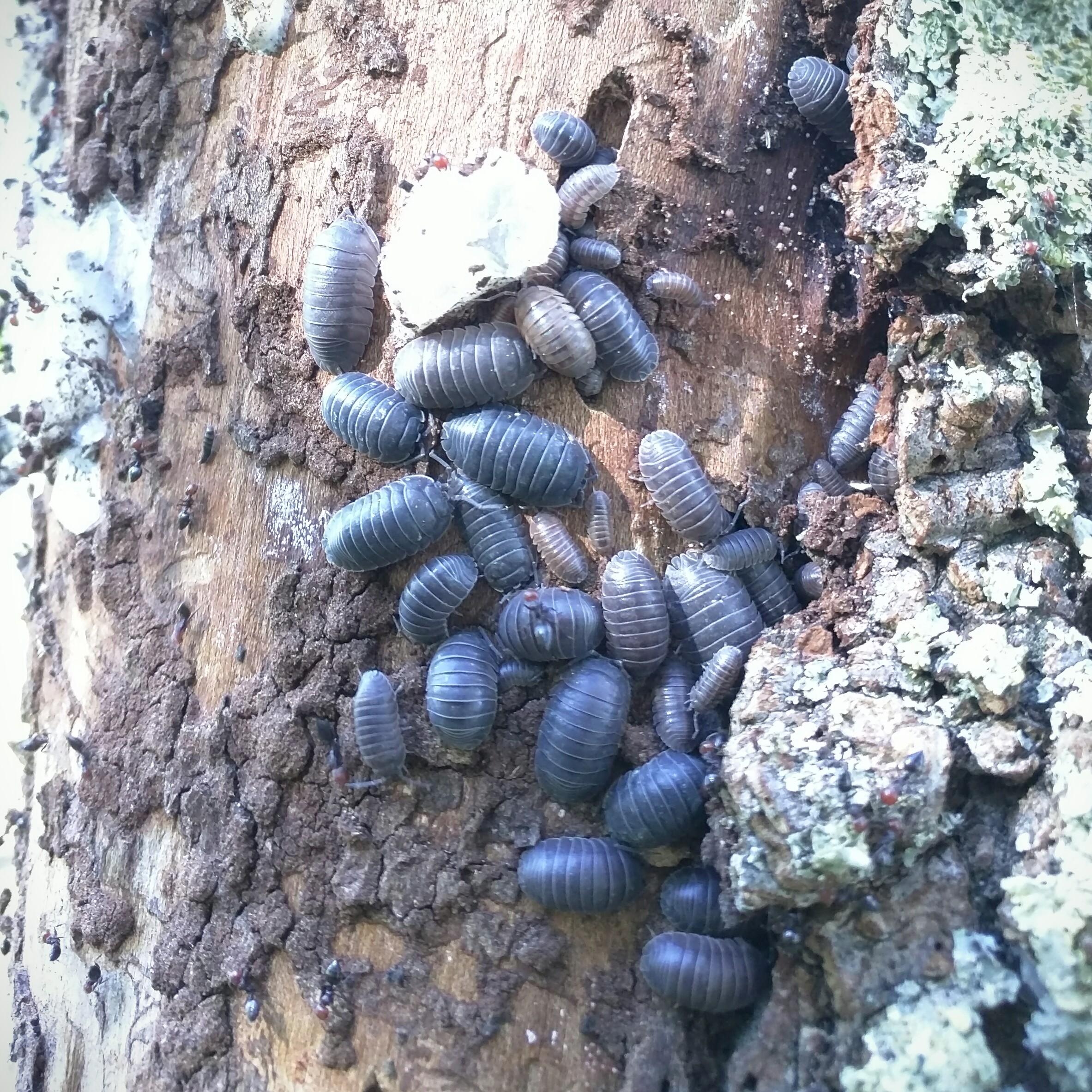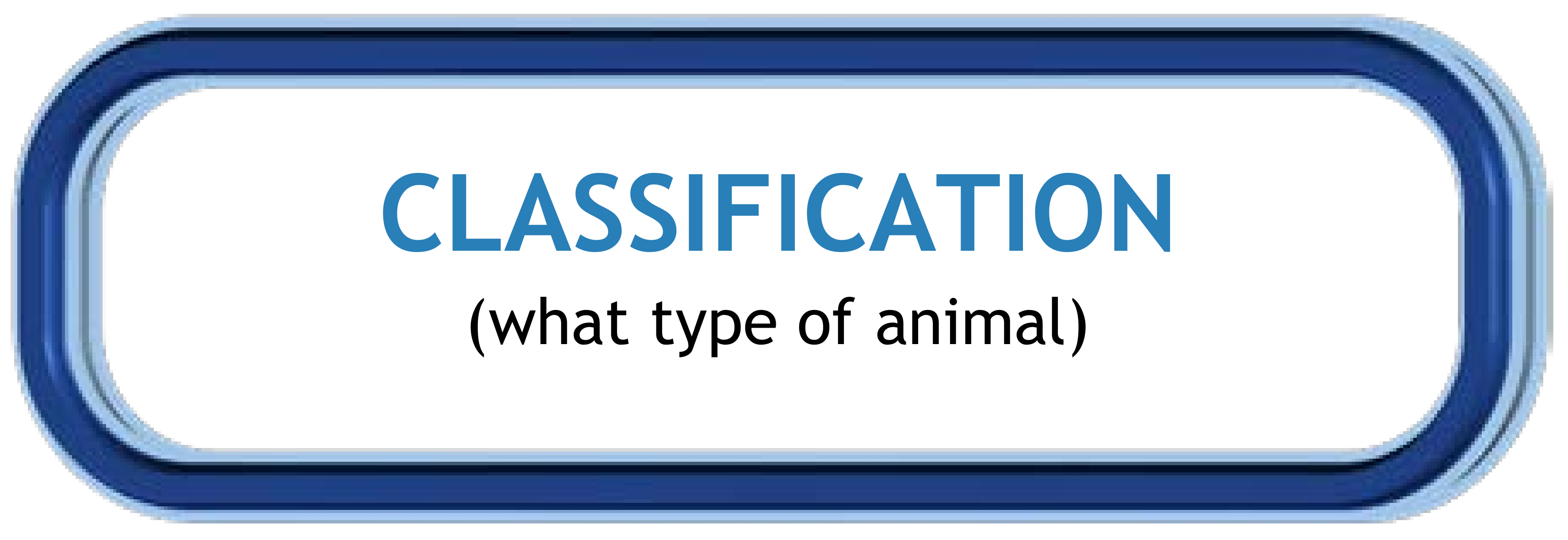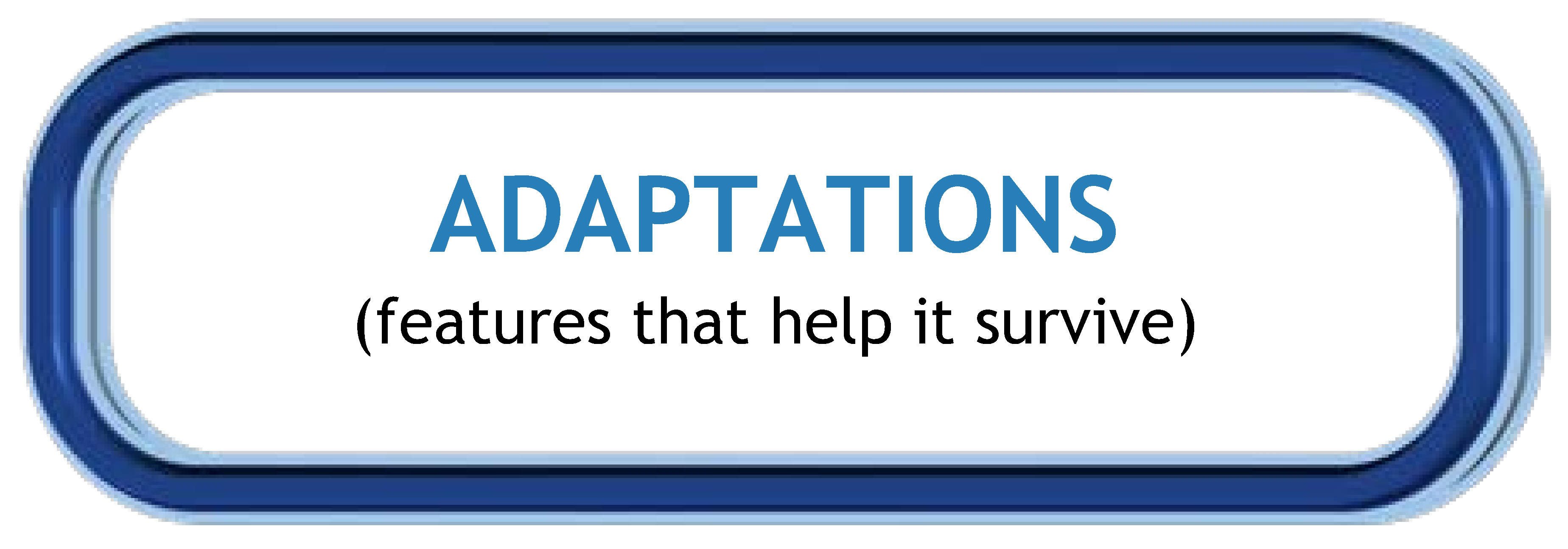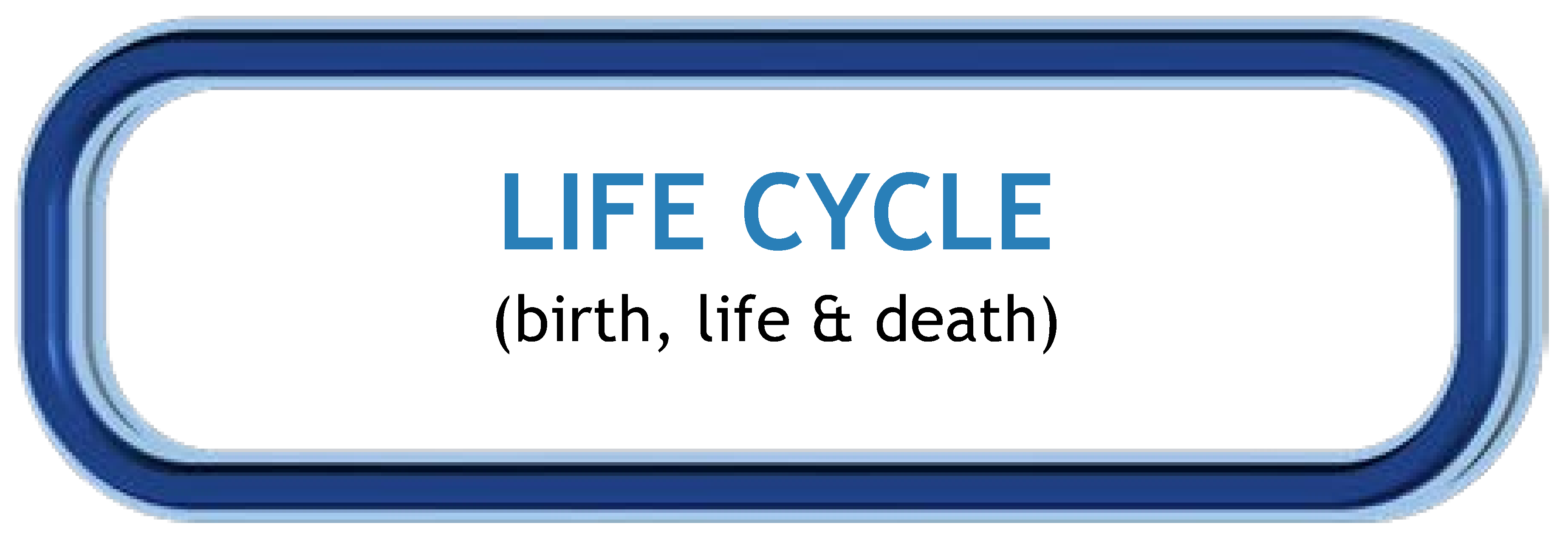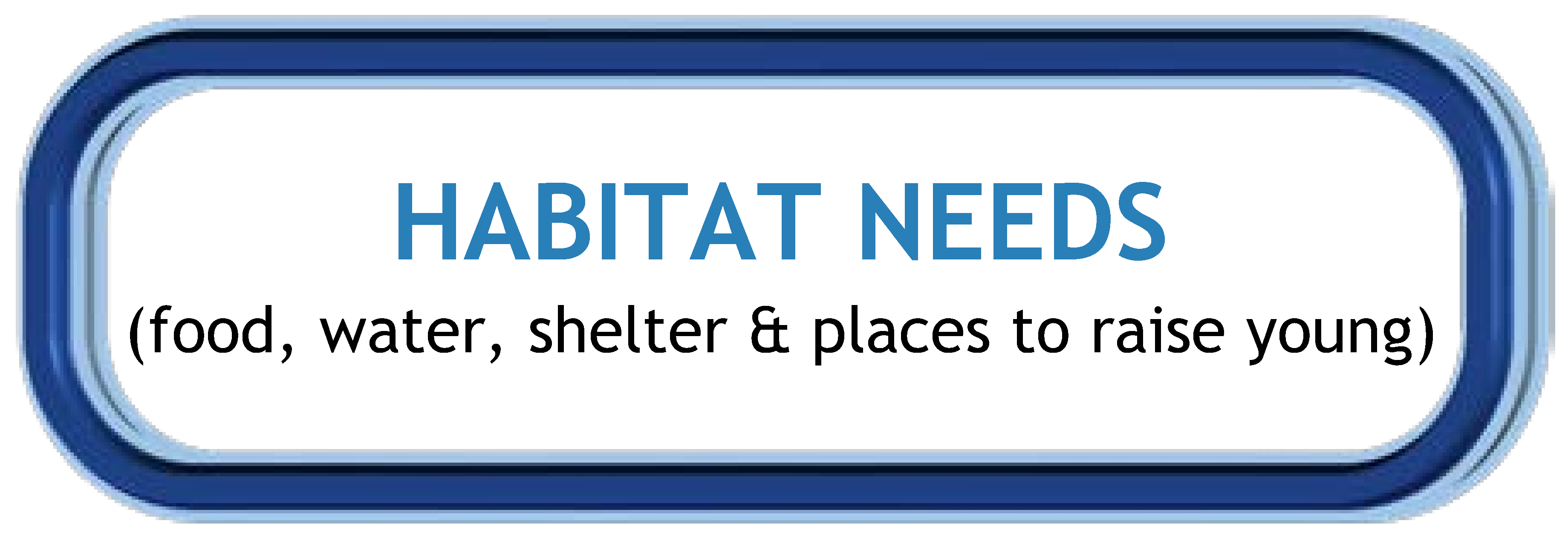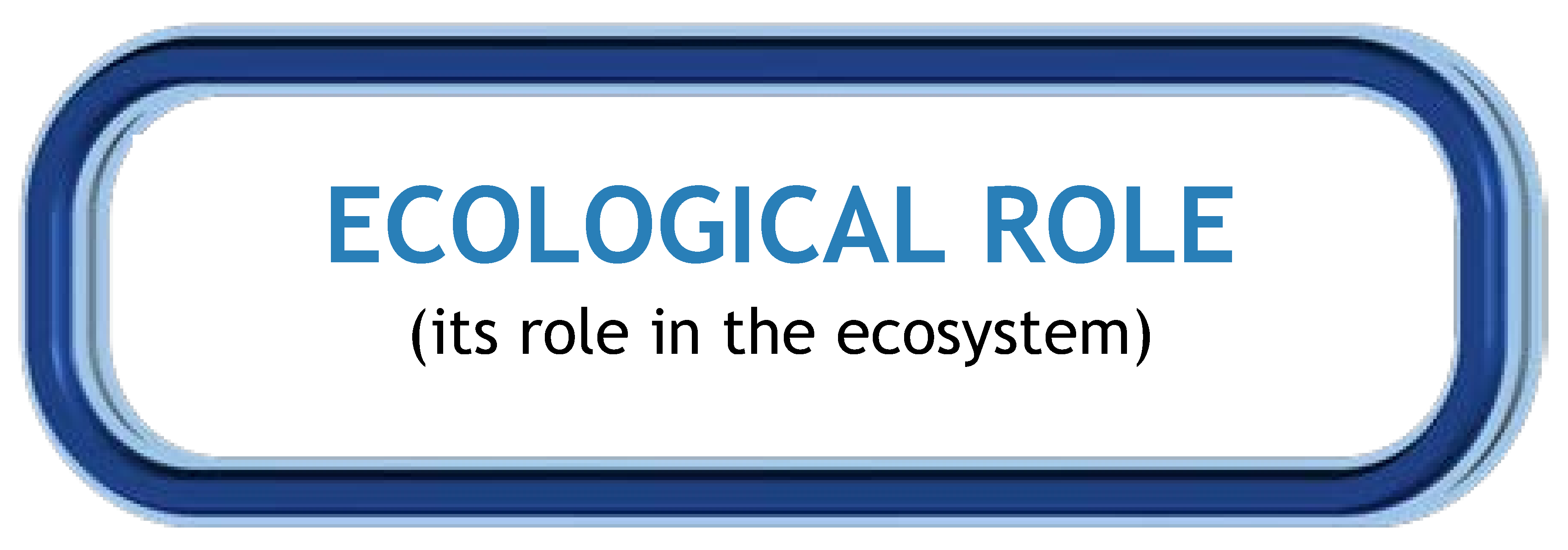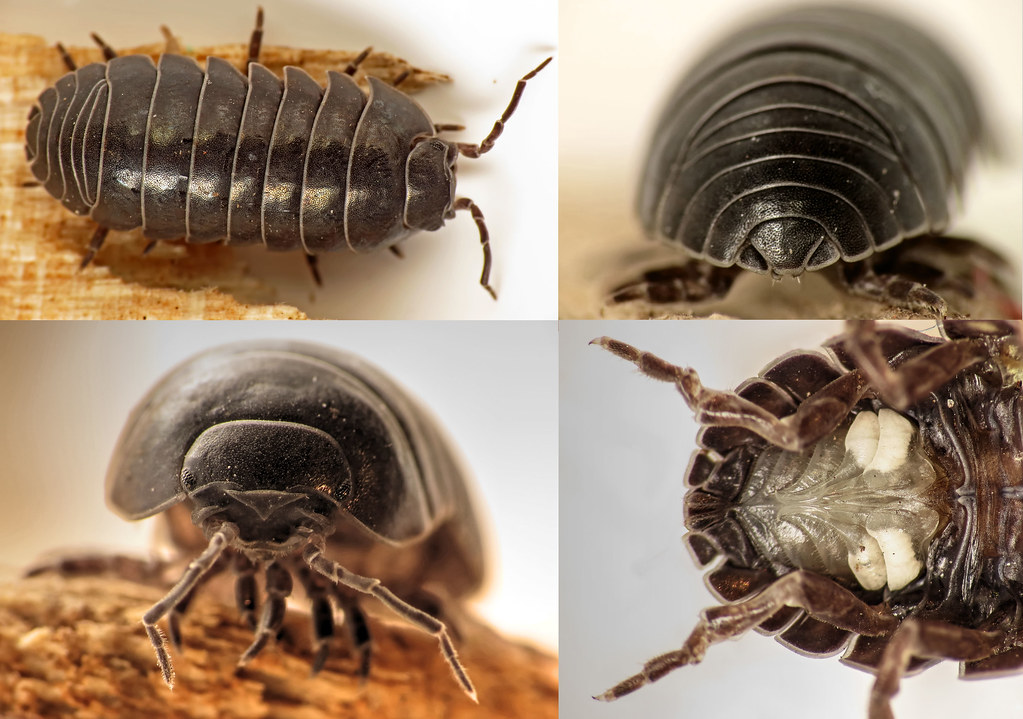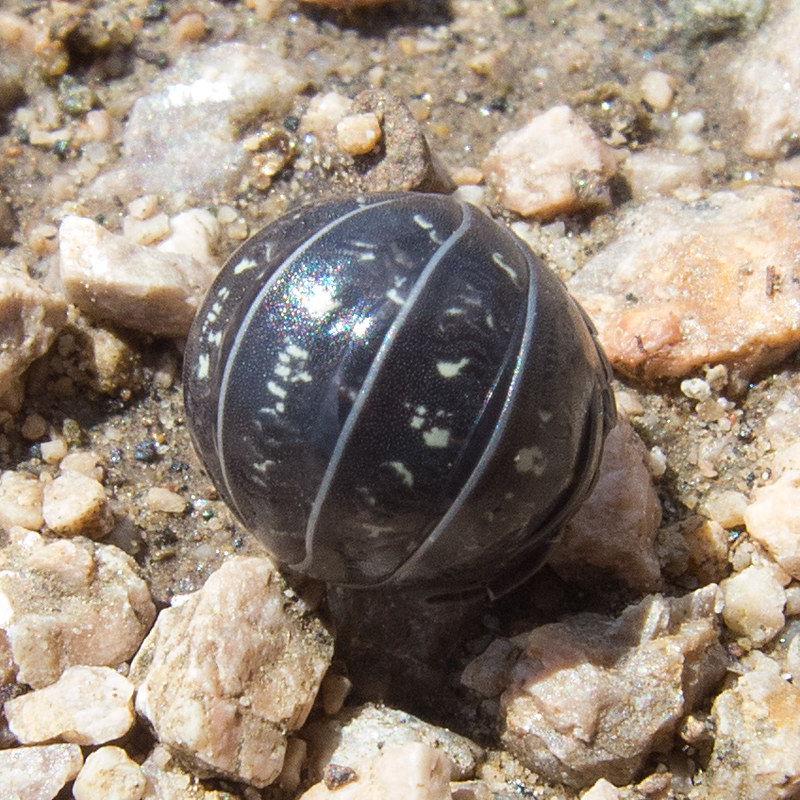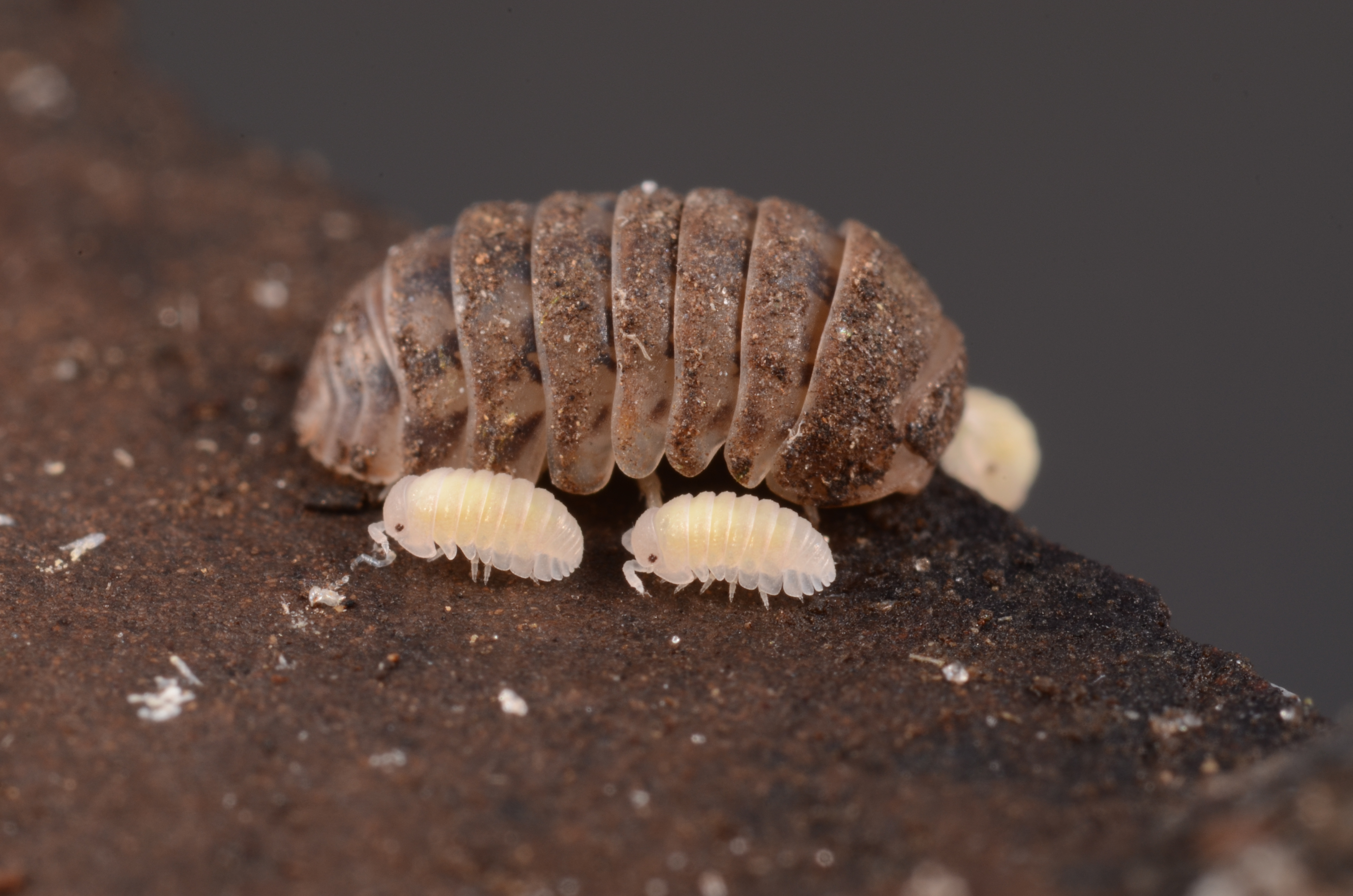Wonders of Wildlife: Pillbug
Pillbug
Other common names: Roly-poly, woodlouse
Scientific Name: Armadillidium vulgare
Found in Alabama: Statewide
Diet: Detritivore (feeds on dead organic material)
|
|
Pillbugs in Habitat
Wikimedia - Assianir
Click on image to enlarge it |
Learn more about...
| CLASSIFICATION |
| |
|
|
What type of animal am I?
- I am an invertebrate (an animal without a spine or backbone).
- I am cold-blooded, so I cannot control my body temperature.
- I have a stiff covering on the outside of my body called an exoskeleton.
- I breathe using gills.
- I have seven pairs of limbs.
|
Scientists use basic traits to group animals into different taxonomic classes.
For a taxonomic classification chart comparing key traits of common backyard wildlife,
CLICK HERE! |
|
| The Pillbug is a CRUSTACEAN! |
| IDENTIFICATION TIPS |
|
Pillbugs
Flickr - Martin Cooper
Click on image to enlarge it
|
ADULT PILLBUG |
- Adults can reach 0.25 to 0.5 inches in length
- Usually twice as long as they are wide
- Coloration ranges from gray to brown
- Body covered with row of tough plates
- One pair of visible anteannae
- Able to roll into a ball because they lack the appendages on the back end that other related species have
- Babies look similar to adults
|
| ADAPTATIONS |
| |
| PHYSICAL ADAPTATIONS |
| |
| Pillbugs avoid and defend themselves against predators: |
- Pillbugs have a drab gray to brown coloration, similar to the surrounding soil and leaf litter, allowing them to camouflage (blend in to the surrounding environment).
- This camouflage helps them avoid predators (animals that eat them).
- They also have tough plates of armor along their bodies that protect them from predators and harsh conditions.
- They have glands that produce unpleasant chemicals that repel predators.
|
| |
| Pillbugs have special hairs (setae): |
- Pillbugs have limited sight, smell, and touch.
- They do not have a nose but instead have small hairs that are used to locate food and other pillbugs.
- They have oher hair-like structures, called tactile setae, on their antennae, mouthparts, and some legs.
- These setae are used for detecting scented chemicals, called pheromones, produced by other pillbugs.
- These chemicals can be found in their waste, in small amounts on their outer shells, and within "marking trails" that are produced when they move throughout their habitat.
- Based on these pheromones, they are able to locate one another and determine if a new habitat is suitable.
|
| |
| Pillbugs breathe using gills: |
- Pillbugs are more closely related to shrimp and crayfish than insects.
- Most species of similar crustaceans live in the sea, but pillbugs and others in the family Armadillidiidae have evolved to live on land and are the only crustaceans to live entirely on land.
- Pillbugs breathe using gills like other crustaceans, but because they live on land, they require a specific level of moisture.
- A pillbug cannot breathe using its gills if the environment is too dry, but they also cannot survive under water.
- The structure of pillbug gills is similar to that of other crustaceans, but, over time, the first two pairs of gills have turned into hollow branched structures.
|
| |
| BEHAVIORAL ADAPTATIONS |
| |
| Pillbugs are nocturnal: |
- They are active during the night (nocturnal).
|
| |
| Pillbugs can curl up into a ball: |
- Pillbugs have the unique ability of curling up into a ball.
- This behavior is called conglobation.
- They do this when they feel directly threatened or feel strong vibrations in the ground.
- When they curl up, their tough armored plates face outward, shielding their softer bellies and legs.
- This behavior also helps them retain moisture to avoid drying out.
|
Pillbug Conglobation
Flickr - Katya
Click on image to enlarge it
|
| LIFE CYCLE |
| |
|
|
Egg: |
- Females lay 100-200 soft-shelled eggs per brood.
- Eggs are carried in a pouch, called a marsupium, on the underside of the female.
- They typically have 1-3 broods per year.
|
Adult and Young Pillbugs
Lyle J. Buss, University of Florida
Click on image to enlarge it |
| |
|
Young: |
- The babies hatch after 3-4 weeks.
- The youngyoung may stay in the pouch for an additional 1-2 weeks to grow before becoming independent.
|
| |
|
|
| Life Span: |
- They can live for 1 - 2 years.
|
NATURAL
Habitat Needs |
ADULTS |
YOUNG |
| Food |
- Pillbugs feed on algae, fungus, moss, bark, and all kinds of decaying plant and animal material.
|
- While in the mother’s pouch, both the eggs and the young survive on nutrients received through marsupial fluid from the mother.
|
| Water |
- Absorb water from food, through mouth parts or by through their appendages on the abdomen.
- They require humid conditions to survive.
|
| Shelter |
- They can live just about anywhere there is moisture and dead plants.
- They can be found in humid places such as under fallen leaves, rocks, or logs and in the soil of fields, gardens, or hedgerows.
|
| Places to Raise Young |
- Eggs and young are carried around by the mother until they are independent.
|
|
BACKYARD
Habitat Needs |
ADULTS |
YOUNG |
| Food |
- Allow some fallen leaves to remain on the ground.
- Do not remove rotting logs or other plant material.
|
- Providing resources for adults will indirectly provide for the young, as they are dependent upon the mother.
|
| Water |
| Shelter |
- They will take shelter under mulch, compost, rotting boards and logs, stones, flower pots, and other items resting on damp ground.
- Add or do not remove these items.
|
| Places to Raise Young |
- Eggs and young are carried around by the mother until they are independent.
- Provide resources for the mother and the young will benefit.
|
|
| ECOLOGICAL ROLE |
| |
|
| Animals play an important ecological role in the health of habitats and ecosystems. |
| |
|
Food Source: |
- Pillbugs are eaten by birds, centipedes, spiders, ants, amphibians, and most other animals that eat invertebrates (animals without a spine or backbone).
|
| |
|
Beneficial to
Agriculture: |
- Because pillbugs burrow often and eat dead plant material, they cause microorganisms (animals that are too small to see with the human eye) in the soil to move around and release nutrients into the soil that would otherwise rot.
- This increases soil quality.
- They also feed on stink bug eggs, providing a natural source of insect control.
|
INFORMATION SOURCES FOR THIS SPECIES
.




 Wildlife Tag
Wildlife Tag
